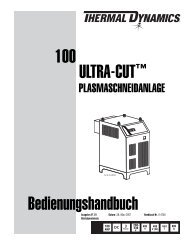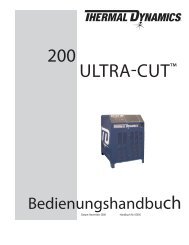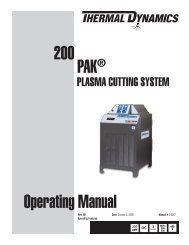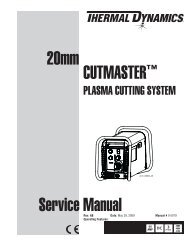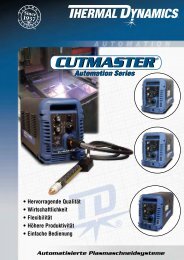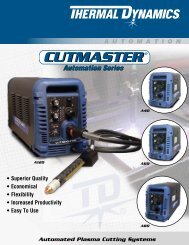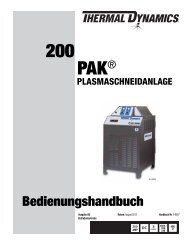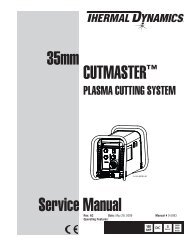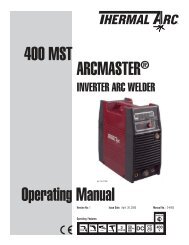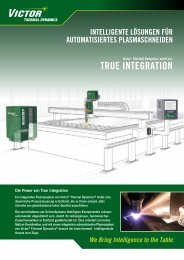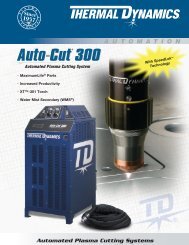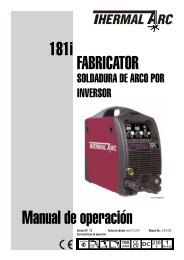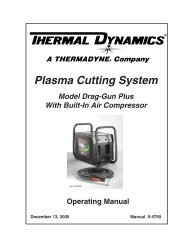211i Operating Manual FabricatOr® - Victor Technologies - Europe
211i Operating Manual FabricatOr® - Victor Technologies - Europe
211i Operating Manual FabricatOr® - Victor Technologies - Europe
Create successful ePaper yourself
Turn your PDF publications into a flip-book with our unique Google optimized e-Paper software.
FABRICATOR <strong>211i</strong> BASIC WELDING<br />
1. Stick-out (distance between the end of the contact tube (tip) and the end of the electrode wire). Maintain<br />
at about 10mm stick-out<br />
2. Wire Feed Speed. Increase in wire feed speed increases weld current, Decrease in wire feed speed<br />
decreases weld current.<br />
Gas Nozzle<br />
Contact Tip (Tube)<br />
Tip to<br />
Work Distance<br />
Electrode Wire<br />
Actual Stick-out<br />
Average Arc Length<br />
Art # A-08997_AD<br />
Electrode Stick-Out<br />
Figure 4-8<br />
3. Nozzle Angle. This refers to the position of the welding gun in relation to the joint. The transverse angle<br />
is usually one half the included angle between plates forming the joint. The longitudinal angle is the<br />
angle between the centre line of the welding gun and a line perpendicular to the axis of the weld. The<br />
longitudinal angle is generally called the Nozzle Angle and can be either trailing (pulling) or leading<br />
(pushing). Whether the operator is left handed or right handed has to be considered to realize the<br />
effects of each angle in relation to the direction of travel.<br />
Transverse<br />
Angle<br />
Longitudinal<br />
Angle<br />
Axis of Weld<br />
Transverse and Longitudinal<br />
Nozzle Axes<br />
Leading or “Pushing”<br />
Angle<br />
(Forward Pointing)<br />
Establishing the Arc and Making Weld Beads<br />
Figure 4-9<br />
Direction of Gun Travel<br />
Nozzle Angle, Right Handed Operator<br />
Figure 4-10<br />
Art # A-08998_AB<br />
Trailing or “Pulling”<br />
Angle<br />
(Backward Pointing)<br />
Art # A-08999_AC<br />
Before attempting to weld on a finished piece of work, it is recommended that practice welds be made on a<br />
sample metal of the same material as that of the finished piece.<br />
BASIC WELDING GUIDE 4-4 <strong>Manual</strong> 0-5225<br />
90°



